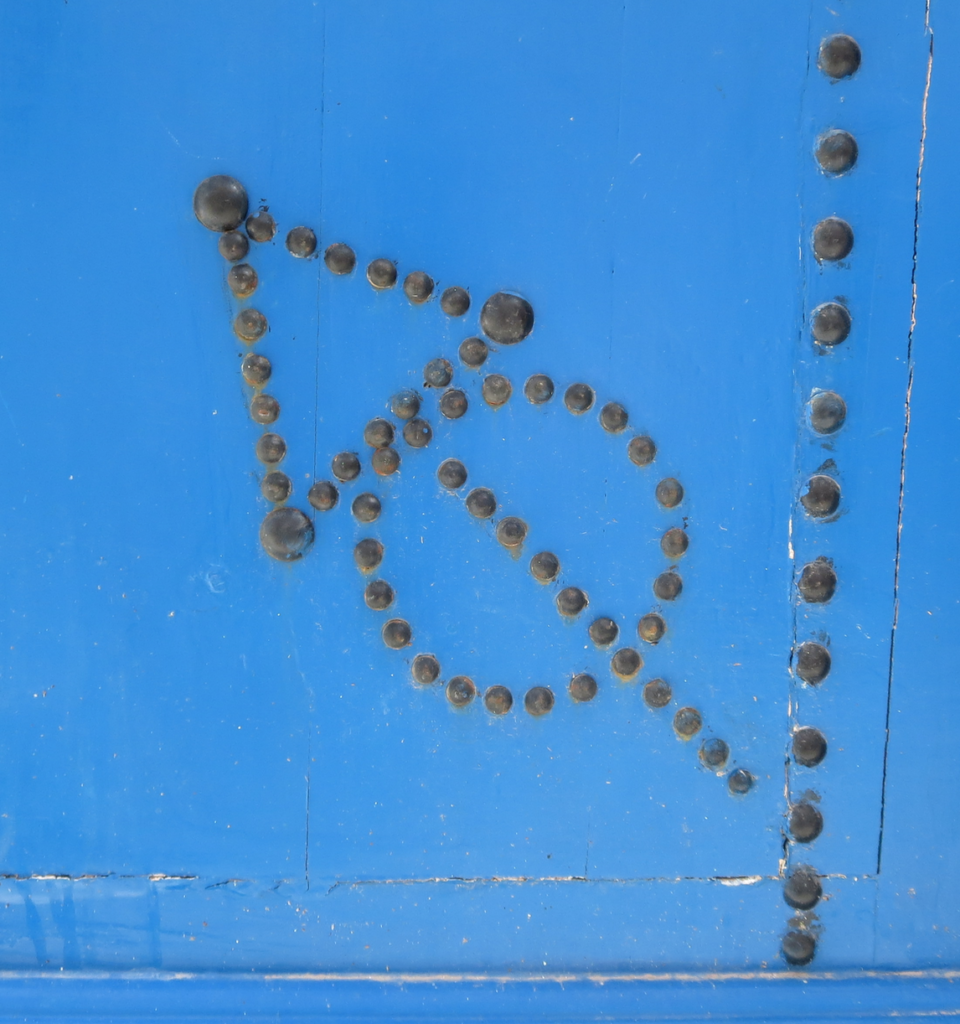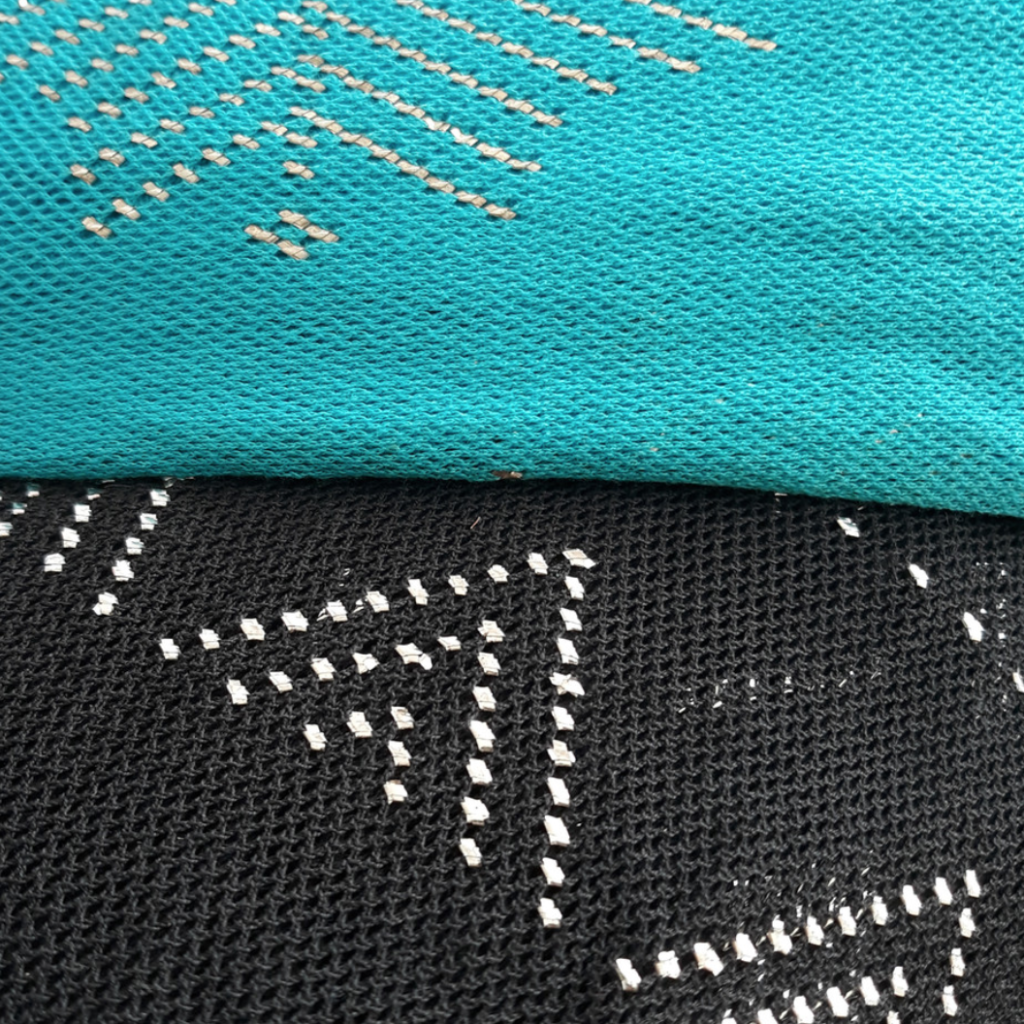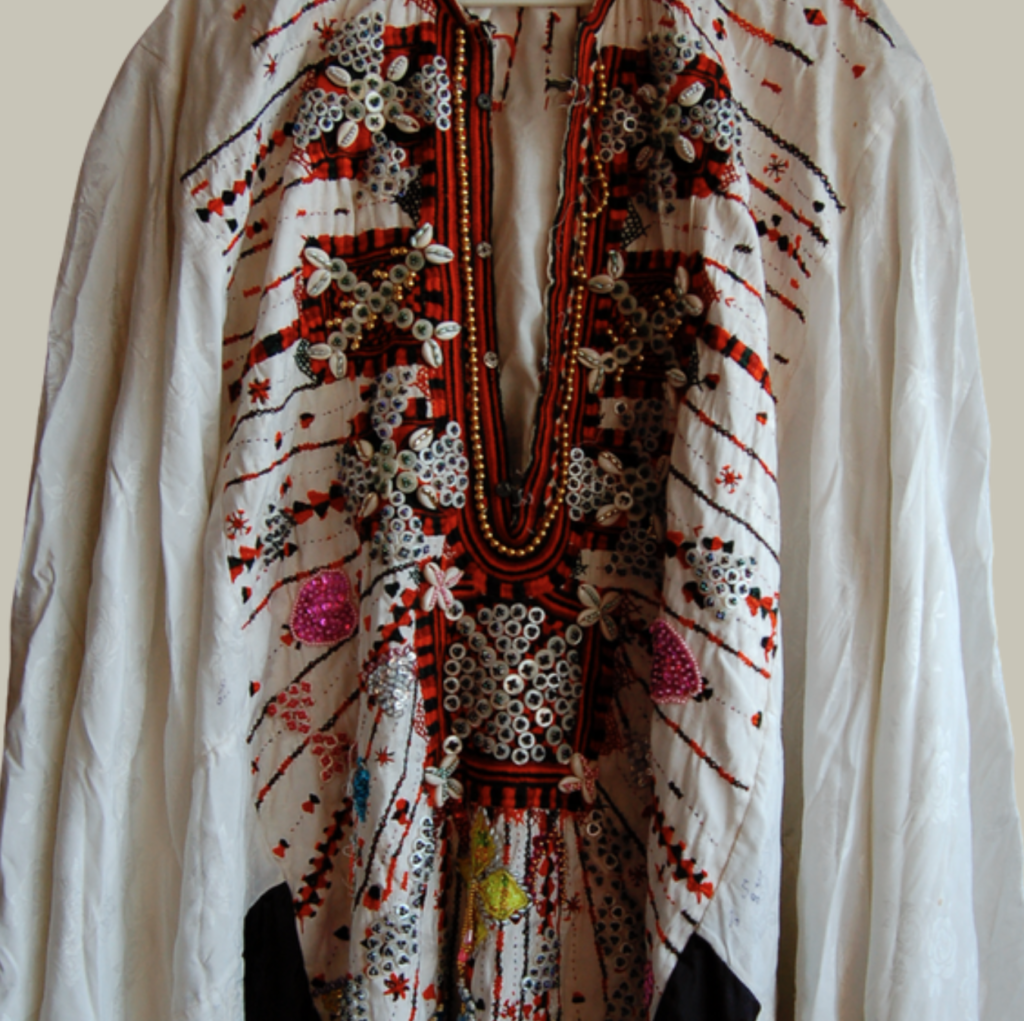Jewellery from the Middle East and North Africa is always part of a larger ensemble: it is linked closely to other elements of personal appearance such as clothing and body aesthetic. Often, it’s not even possible or even necessary to discern where jewellery ends and dress begins.
 A fibula symbol on a door in Tunis: jewellery as a carrier of cultural identity
A fibula symbol on a door in Tunis: jewellery as a carrier of cultural identityA practical connection
Many jewellery items are designed to fasten clothing or to keep textiles in place and as such form an integral part of a persons’ attire. Changes in costume are often directly reflected in changes in the accompanying jewellery. Many jewellery items are no longer worn because the costume they were an integral part of has changed. For example, the large Amazigh fibulas that kept the traditional dress of the Maghreb secure are no longer used, as these garments themselves are no longer worn on a daily basis. They are however proudly worn on festive occasions: although their practical use has dwindled, their life as a carrier of cultural identity certainly has not. Another example is hair jewellery, which I discussed earlier on this blog. Hairstyling is an important part of body aesthetic and of social practices, and jewellery was used to keep these wonderful hairdos in place. Here as well, changes in hairstyle bring about changes in jewellery, another example of how closely connected jewellery and dress are.
 Detail of Egyptian tulle bi telli-work
Detail of Egyptian tulle bi telli-workWoven silver
Other pieces of jewellery have become so associated with the textiles they are worn on that it is useless to try and tell where the jewellery ends and the clothing begins. Take the richly ornamented face veils from Sinai and Palestine for example, which combine both textile and jewellery traditions. The
tatreez
Ṭaṭrīz (Arabic) - Palestinian embroidery, a folk art traditionally passed down from mother to daughter. The motifs and styles are regional. embroidery that is so well known from clothing is also used on the face veil, which also carries beads, coins and small pieces such as silver amulets, and these last ones are in turn also worn on necklaces. The stunning
burghu riyasi in the
Zay
Zay: (Arabic: costume, Pl. azyaā’), a set of clothes in a style typical of a particular country or historical period. Collection, decorated with gold, is another example of an element of a dress with the grace of a jewel.
The elaborate face veils of the Rashayda are also both an element of dress and of jewellery. These are made of textile with silver woven in, resulting in very heavy and glinting veils. These are further embellished with silver pendants and amulets that may equally be worn as jewellery. We find this tradition of textiles embellished with silver or even gold thread in many garments from the region, such as the
sirwal
Sirwāl: (Farsi: shalvār; Synonym: Salwar
Salwar: (Farsi: shalvār; Synonym: ṣarwāl, shirwāl ), trousers featuring tapering ankles and drawstring closure of Central Asian origin. They disseminated in the Indian subcontinent between c.1st-3rd century BCE. Although exact period of its arrival in the Arab world is disputed their widespread adoption is confirmed from the 12th century.
, Ṣarwāl, sharwāl, salbāl, khalag), pair of trousers with tapering ankles and fastened with a draw string. Believed to have originated in Central Asia it has spread since in the Indian subcontinent between c. 1st – 3rd century BCE and the Middle East from c. 12th century. with its badilah work, the
tulle bi telli dresses from Egypt and
the gauzy shayla minaghidah The chest panel of a Siwa dress, showing an embroidered necklace with square amulets
The chest panel of a Siwa dress, showing an embroidered necklace with square amuletsPatterns and designs
The line between jewellery and dress disappears even more in the case of embroidered embellishments. The
burghu riyasi mentioned above also exists in a version where the gold ornaments have been rendered in embroidery instead. The chest of Egyptian Siwa Oasis wedding dresses is embroidered in the pattern of an amulet necklace, and even the use of colour in some embroidery styles is similar to colours used in jewellery. The same goes for patterns and shapes used: not only common designs such as triangles but specific shapes such as fish, tortoises, stars and floral designs exist both in jewellery and in dress as well as in body aesthetics. It’s their meaning to the wearer that is central, instead of a division by material or object category. Looking beyond jewellery to the complete ensemble of personal presentation makes us appreciate this many-layered heritage even more!
Header image: A face veil in Petra: jewellery or dress? Photo: Canva




 A fibula symbol on a door in Tunis: jewellery as a carrier of cultural identity
A fibula symbol on a door in Tunis: jewellery as a carrier of cultural identity Detail of Egyptian tulle bi telli-work
Detail of Egyptian tulle bi telli-work The chest panel of a Siwa dress, showing an embroidered necklace with square amulets
The chest panel of a Siwa dress, showing an embroidered necklace with square amulets